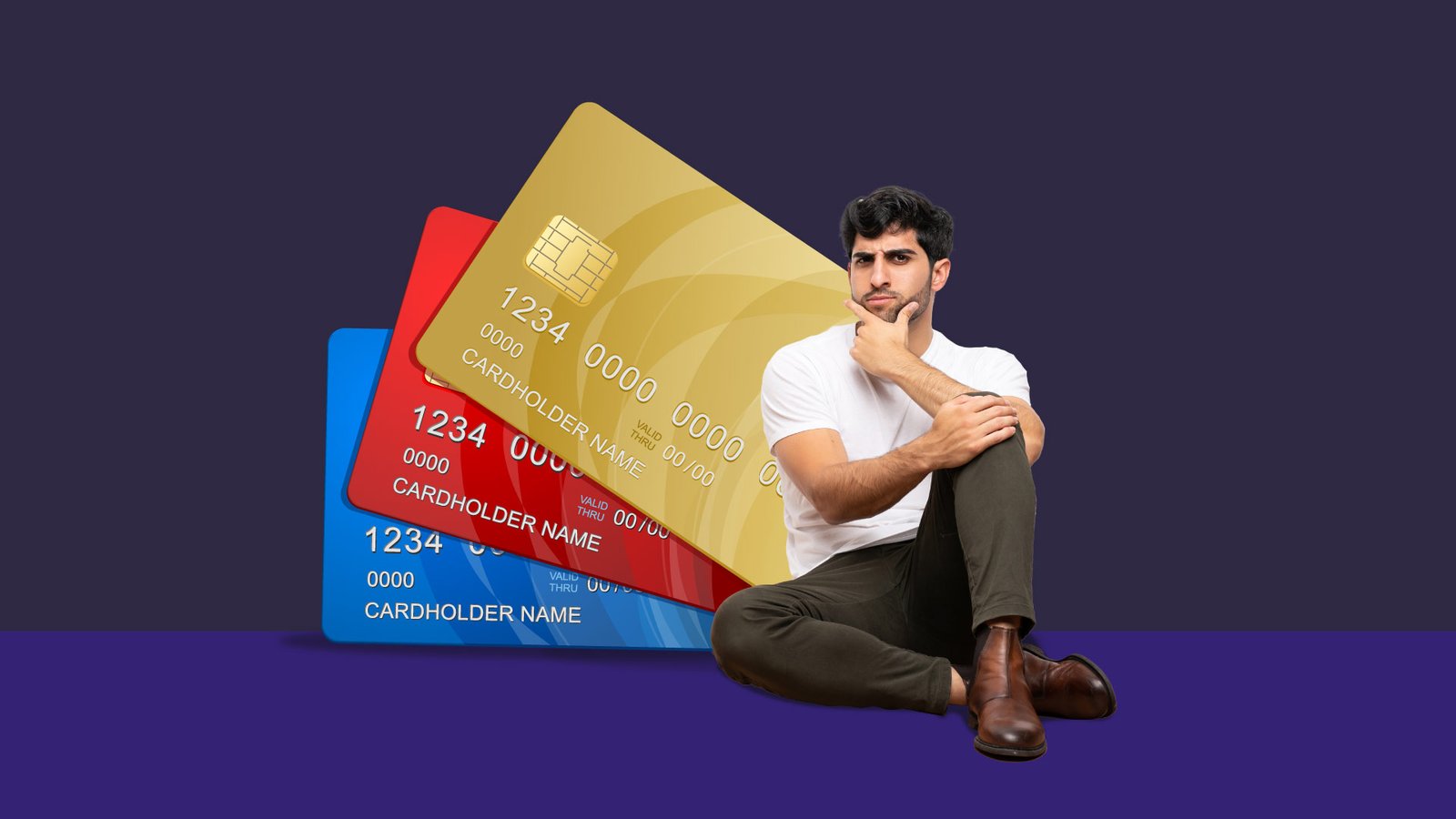-
Introduction: More Cards, More Problems or More Power?
Getting a credit card is like unlocking a small loan on tap — sounds tempting, right? But what happens when you open the door to multiple cards? Does it mean more spending power, or does it spiral into debt hell?
In 2025, credit card usage in India has surged, and so has the curiosity: “Should I get more than one card?”
The answer isn’t a simple yes or no — it depends on your financial discipline, income stability, goals, and spending patterns. This blog breaks it all down with real-life logic, detailed explanations, and brutally honest verdicts.
-
Advantages of Having More Than One Credit Card
🔸Better Credit Utilization Ratio (Boosts Credit Score)
Your credit utilization ratio is the percentage of available credit you’re using. For example, if your total credit limit across all cards is ₹2,00,000 and you’re using ₹40,000, your utilization is 20%.
Keeping this ratio low (under 30%) is a major factor in boosting your CIBIL or credit score. Having multiple cards increases your total credit limit, which helps reduce this percentage, even if your spending remains the same.
💡 Example: If one card has a ₹50K limit and you often spend ₹30K monthly, you’re at 60% utilization — a red flag. Add another card with ₹50K, and you’re now at 30% — much healthier.
🔸Maximized Rewards & Benefits Across Categories
Different cards offer different perks — travel, fuel, dining, shopping, or utilities. Having multiple cards lets you strategically use each card where it gives the most value.
💡 Example: Use SBI Cashback Card for online shopping, HDFC Millennia for Flipkart & Amazon, and Axis Ace for bill payments through Google Pay — now you’re earning 5%–10% back instead of just 1% on a single generic card.
🔸Backup During Emergencies
If one card gets declined or is under fraud investigation, a backup card ensures you’re not left helpless during travel, hospital emergencies, or while paying hotel bills.
Multiple cards provide payment reliability and reduce dependency on a single issuer.
🔸Higher Total Credit Limit = Greater Flexibility
Want to book an international trip or shop for a wedding but don’t want to touch savings? Having a higher total credit limit across multiple cards gives you short-term liquidity — just ensure you repay it responsibly.
🔸Access to Diverse Offers & Discounts
Different banks run different festival offers, EMI schemes, or cashback events. One bank may have 10% off on Amazon, while another gives 20% on Zomato.
💡 Having 2–3 cards means you can cherry-pick the best offers and stack benefits.
-
Risks & Downsides of Having Multiple Credit Cards
🔸More Cards = Higher Temptation to Overspend
With higher limits and more plastic in your wallet, the temptation to swipe more is real. You may start spending on things you don’t need, just because “credit hai bhai.”
This is the fastest way to fall into debt traps if you’re not financially disciplined.
🔸Complexity in Tracking Spends
Managing one card is easy, but with three? You need to track cashback conditions, EMI charges, spending limits for annual fee waivers, and due dates.
If you’re not organized, your credit card game can go from smart to stressful real quick.
🔸Annual Fees Can Add Up
Many premium cards charge annual or renewal fees (₹500–₹5,000). If you’re not using each card strategically, you’re basically paying to not use your own money.
💡 Tip: Only keep cards where you can recover more in benefits than the fees you pay.
🔸CIBIL Score Can Take a Hit (Temporarily)
Every time you apply for a new credit card, it triggers a hard inquiry on your credit report. Too many applications in a short time can lower your credit score temporarily.
Plus, if you keep too many unused cards open, lenders may assume you’re credit-hungry, which can hurt your approval chances for bigger loans later (like home loans).
-
How to Manage Multiple Credit Cards Like a Pro
🔸Auto-Pay Setup Is a Must
Set up auto-debit for minimum or full payments from your bank account. This way, you never miss a due date and avoid late fees or interest penalties.
🔸Use a Budgeting App or Excel Tracker
Use apps like Walnut, MoneyView, or Spendee to track card spends and due dates. Or, just maintain a simple monthly tracker in Excel/Google Sheets.
Include:
🔹Spend per card
🔹Rewards earned
🔹Due date
🔹cycle
🔹Annual fee waiver eligibility
🔸Know the Purpose of Each Card
Assign a role to each card:
🔹Card A = Online shopping
🔹Card B = Travel & fuel
🔹Card C = Daily spends & food
This ensures you’re maximizing returns and not randomly swiping.
🔸Pay in Full, Always
If you can’t pay in full, don’t swipe. Paying just the minimum will lead to massive interest accumulation. Remember, credit card debt is the most expensive loan out there.
🔸Keep Credit Utilization Below 30% per Card
Don’t max out one card just because you have another free. Keep every card below 30% usage monthly — this keeps your credit score safe and shows you’re a responsible borrower.
-
Who Should Definitely Have More Than One Credit Card?
✔️ Salaried professionals with stable income
✔️ Frequent travelers or business professionals
✔️ Online shoppers and utility bill payers
✔️ Financially disciplined users who never miss due dates
✔️ People aiming to improve or maintain a high credit score
-
Who Should Avoid Multiple Credit Cards?
🚫 Students or freshers with no income
🚫 Anyone who struggles to pay credit card bills on time
🚫 People who already have existing EMIs/loans
🚫 If you’re forgetful or unorganized with financial dates
🚫 Someone prone to impulsive or emotional spending
-
Final Verdict: Should You Get More Than One Credit Card?
YES — but ONLY if you’re disciplined.
Having more than one credit card can work wonders for your financial game. You’ll enjoy better credit scores, more cashback, more rewards, and smoother spending flexibility.
BUT — without self-control, it’s like giving fireworks to a kid. One wrong swipe, one missed due date, and boom — welcome to the debt jungle.
🔥 Pro Tip: Start with two cards max. Master them. Track your spending. Pay on time. If you nail this, then go for a third. Never apply for three at once.
-
Conclusion
In the end, having more than one credit card isn’t about flexing — it’s about using the system smartly to benefit you. You can build your credit score, earn juicy rewards, and manage money like a boss — but only if you’re aware, organized, and in control.
So, ask yourself: “Am I ready to level up my financial game, or do I still need to master the basics?”




